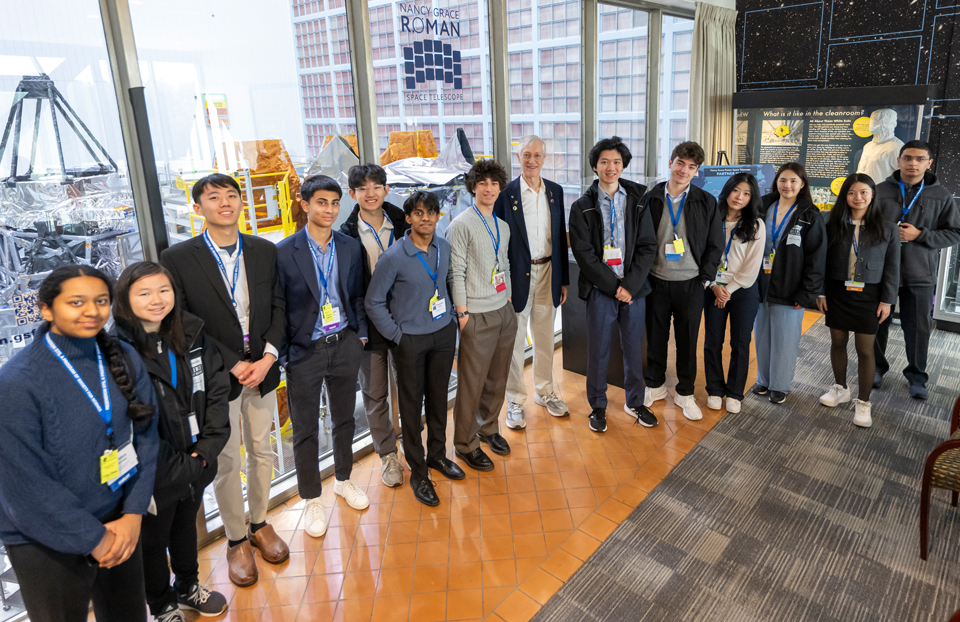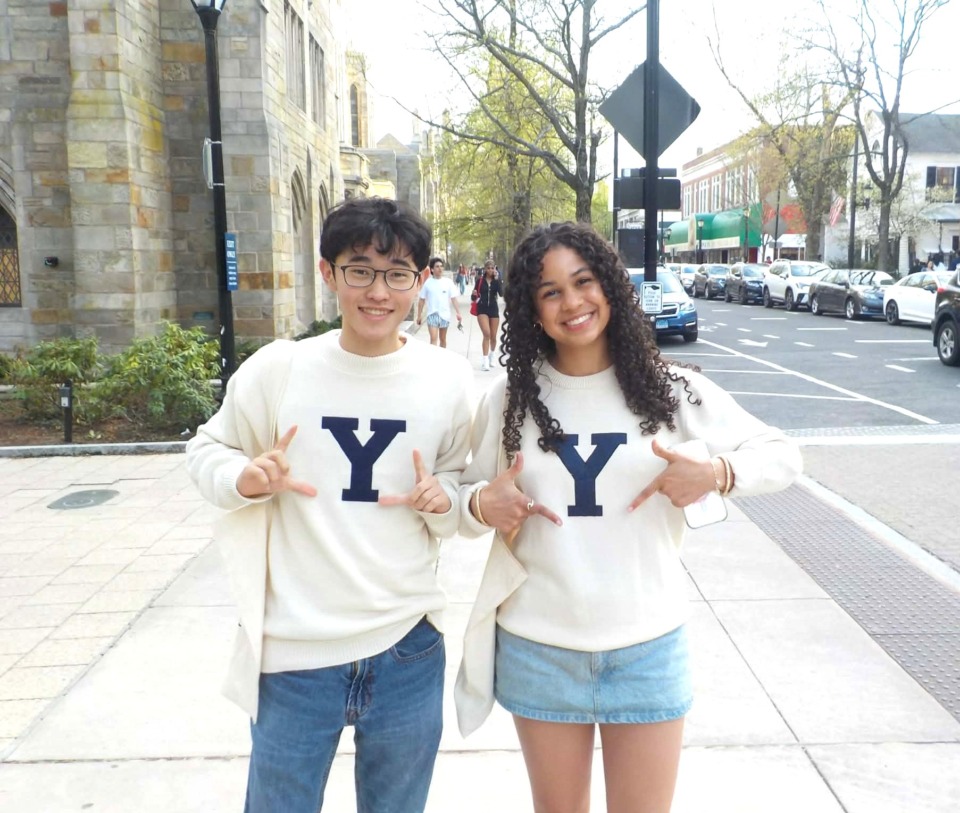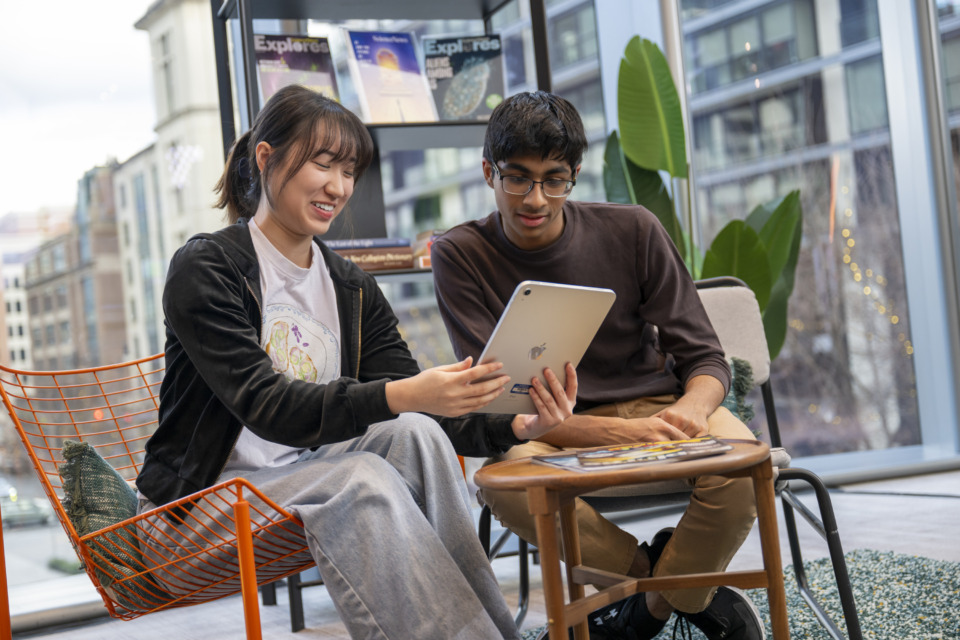Tomorrow’s leaders in science visit NASA Goddard, embracing the power of research and curiosity

After meeting with judges and sharing their research at the Public Exhibition of Projects, the 2025 Regeneron Science Talent Search finalists experienced more exciting Finals Week traditions with several field trips to prominent D.C. area institutions. They toured the National Gallery of Art, the Museum of Natural History, the Janelia Research Campus in Lansdowne, Virginia and NASA’s Goddard Space Flight Center in Greenbelt, Maryland.
John Mather, a Nobel Laureate and senior astrophysicist at NASA Goddard, welcomed the students. They also met with Joanne Hill-Kittle, acting deputy center director for technology and research investments. The students wrapped up their time with a networking workshop featuring Jane Rigby, senior project scientist; Stephanie Uz, applied sciences manager; and Lisa Adams, NASA student services manager. Topics ranged from the evolution of galaxies to space telescopes and Earth science.
“I’m fascinated by space and flight and have looked up to NASA as an inspiration since I was a kid—my STS project was inspired by an old NASA design,” said Kevin Shen, 18, of Olympia, Washington. “So, once I was presented with the opportunity to visit an actual NASA space flight center, I just had to go.”
The finalists learned about the making of the Nancy Grace Roman Space Telescope. This telescope, projected to launch in 2027, will capture wide-field observations of dark matter and dark energy, offering new insights into the cosmos. The makers and contributors to the telescope’s construction wore “bunny suits” to avoid any organic contaminants.
STS finalist, Ashley Zhu, 17, from Bayside, New York, told us it was fascinating to see the long and rigorous process of building the telescope. “It was also interesting that different telescopes have been built for different purposes,” Ashley said.
Astrophysicist and Nobel Prize recipient in Physics John Mather spoke to the students about his journey from enthusiastic high schooler to NASA scientist. “I was very excited about astronomy,” John said. “For my high school science fair project, I tried to measure the orbit of an asteroid by building a camera. I couldn’t build it, and I couldn’t calculate it, but later, I had access to computers.”
After graduate school, John found himself able to work for NASA in New York City and pitch his graduate school thesis for new satellite mission proposals. “That became the Cosmic Background Explorer satellite,” John said. “It went up and worked successfully.”
The Cosmic Background Explorer satellite measured the spectrum of the Big Bang by tracking radiation from the earliest parts of the universe. Years later, John said they created a map of the hot and cold spots in the radiation, revealing that the universe’s expansion was not uniform. “From there, we have the beginnings of the universe,” he explained. “And if you use the calculations, you should be able to predict what happens next,” John said.
The students then met with Joanne Hill-Kittle, acting deputy center director for technology and research investments at NASA Goddard. Joanne always dreamed of being the first woman on the moon, a passion that led her to study physics in school and eventually earn her Ph.D. in X-ray instrumentation.
Her journey then led her to a research associate position at Penn State, where she built sounding rockets and participated in other astrophysical missions such as SWIFT. “We managed looks at gamma-ray bursts halfway across the universe, trying to figure out where they are,” Joanne said. “Once the instruments saw the gamma-ray bursts, they autonomously smoothed the other instruments, and we sent all the data across the entire world for other instruments to analyze.”
STS finalist, Elisa Zhang, 17, of San Ramon, California said she learned that NASA scientists devote significant time to sharing their research because of the agency’s mission to educate the public. Vishwum Kapadia, 17, of Chagrin Falls, Ohio added that the visit to Goddard enabled him to meet individuals leading some of the most important missions to space. “This is a domain that excites me and fuels my curiosity.”
Learn more about the 2025 STS Finals Week and the winners of the competition here.


